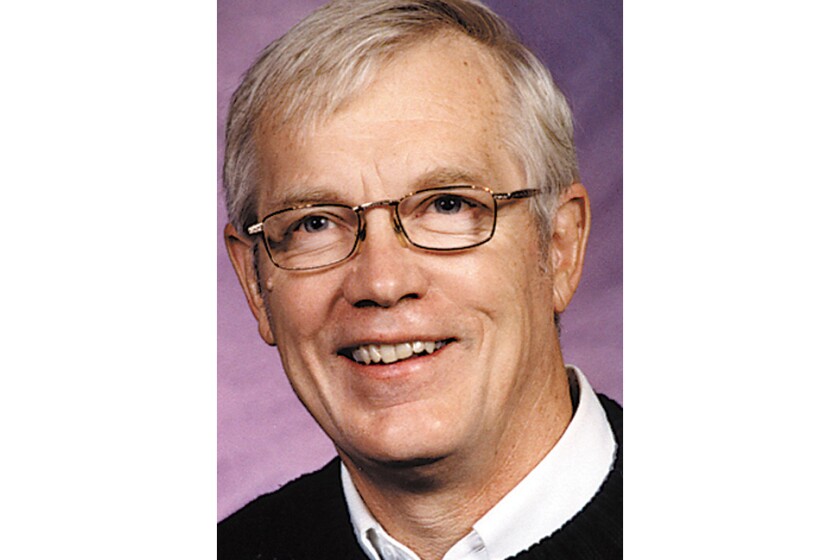One of the best and most often forgotten things about growing older is that you have more memories, which keep you young.
I just returned from my 63rd class reunion, and most of the talk was about memorable experiences.
ADVERTISEMENT
By the end of the reunion, everyone looked younger. Some of the talk was about duck hunting and Friday night lights.
Fall meant cooler temperatures, mothers and grandmothers canning everything from peaches to peas, and Friday night football. It also meant the opening of duck hunting.
Life couldn’t get much better growing up in the 50s.
My hometown of Waterville was fortunate to have potholes, sloughs, rivers and small lakes in all directions. Everyone had their favorite spot.
My father joined a group of friends who cherished the slough on the Vern Hand property south and east of Waterville. It was a duck hunter’s paradise. Corn and soybean fields, woods and pastures surrounded the slough.
The hunters gathered on its shores a week before the season began to prepare walkways through the cattails and tall slough grass leading to the water.
Ducks would be flying overhead with comments from the guys, "Don’t go too far away."
ADVERTISEMENT
Duck hunting, like pheasant hunting, was very good in the 1950s. There were few "no trespassing" signs and plenty of habitat, including fence rows for pheasants and potholes for ducks.
The season always opened on a Saturday at noon, but we would be out in the blinds an hour earlier. My brother and I would take turns being with our dad in the duck boat and sharing a double-barrel 410 shotgun.
Thousands of blackbirds filled the sky as we made our way to our duck blind, emptying the gunny sack of wooden decoys along the way. Hundreds of coots or mudhens swam this way and that way, showing no fear.
Flocks of mallards and teal winged overhead, wondering why so many small boats had invaded their sanctuary.
The clock never moved as slowly as it did before the noon opening. Invariably, about 10 or 15 minutes before noon, some shots were fired far off in the distance, and then a few minutes later, shots were fired by one of the guys, which signaled that the opening day of duck season had arrived.
I no longer duck hunt, but it has become a ritual that I stand among the cattails on Lake Julia on opening day.
I look in the sky, savor the smell of the water and slough grass, and think about those joyful and exciting times in Waterville when some guys boarded their duck boats, hoping the next flock of mallards would land in their decoys. And some always did.
ADVERTISEMENT
Friday night lights
Once upon a time, high school football games were played in the afternoon because no lights surrounded the hundreds of football fields in the state.
Lights first surrounded my hometown football field in the early 1950s. Now, everyone could enjoy the excitement of Friday night lights.
Football practice began around the third week in August. Guys would gather in the gym and our two hometown doctors would give the players a quick physical. Medical insurance was available for the players for $3.
If you fractured your skull, you were given $25; if you broke your nose, that was worth $15; if you lost the entire sight of one eye, the benefit was $250; and, heaven forbid, if you died on the field of valor, you were given $500.
This included medical, hospital, and funeral services, all compliments of the State High �������� League.
Many boys considered the first day of football practice, next to the opening day of duck season, the best day of the year.
Coaches found a place on the gravel, weedy playground south of the high school to hold practice. Most of the area was infested with those nasty sandburs.
ADVERTISEMENT
There would be about 40 guys out for football, consisting of both A and B squads. My 1955 seventh-grade class was the first time they began a C squad for seventh and eighth-graders.
I knew football was my sport after I ran for a 40-yard touchdown against Waseca. When I crossed the goal line, it felt like a thousand needles had poked me over my entire body.
Coaches Dahl, Kelly and Bengston took us through our drills. In 1958, my brother, Craig, and I ran for six touchdowns as we beat Belle Plaine 65-0. Unfortunately, things did not always go that well for the Waterville Buccaneers.
It’s Friday night. You dress in the old school locker room, hear your cleats on the sidewalk as you walk outside, smell the fresh fall air, jog across the playground, see the lights illuminating the sky, run onto the field to the noise of the crowd and the cheerleaders and battle against your foe.
That’s a memory I and many other older high school football players will never forget.
I no longer hunt ducks. I try to attend one or two high school football games yearly. I envy those players running onto the field among the cheers of the fans and the cheerleaders.
I know they can’t appreciate how important these moments are. Young people never do. Someday, they will. As George Bernard Shaw said, "Youth is wasted on the young."
ADVERTISEMENT
Riddle: Why is it always hot at the end of a football game? (Answer: Because all of the fans have gone home. Fortunately, we still have our memories.)
100%
I want to thank the Education Committee of the Minnesota Chippewa Tribe for allowing me to talk about Project Graduate.
John R. Eggers of Bemidji is a former university professor and area principal. He also is a writer and public speaker.









